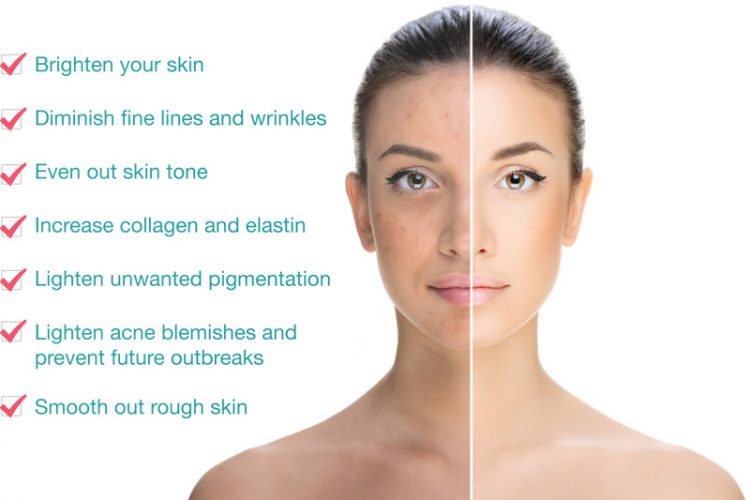A Chemical Peel is a procedure used to improve the appearance of the skin on the face, neck or hands. A chemical solution is applied to the skin that causes it to exfoliate and eventually peel off. The new, regenerated/rejuvenated skin is usually smoother and less wrinkled than the old skin. The new skin is also temporarily more sensitive to the sun.
Chemical Peel is a technique used to improve and smooth the texture of the skin. Facial skin is mostly treated, and scarring can be improved. Chemical peels are intended to remove the outermost layers of the skin. To accomplish this task, the chosen peel solution induces a controlled injury to the skin. Resulting wound healing processes begin to regenerate new tissues. The dead skin eventually peels off. Some types of chemical peels can be purchased and administered without a medical license, however people are advised to seek professional help from a dermatologist or cosmetologist on a specific type of chemical peel before a procedure is performed. We at Dermestheitc have experienced dermatologists and cosmetologists having expertise and knowledge of chemical peel treatments and procedures.
Consultation
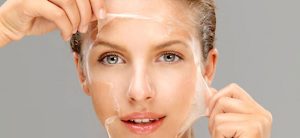 Normally, fair-skinned and light-haired patients are better candidates for chemical peels. If you have darker skin, you may also have good results, depending upon the type of problem being treated. But you also may be more likely to have an uneven skin tone after the procedure.
Normally, fair-skinned and light-haired patients are better candidates for chemical peels. If you have darker skin, you may also have good results, depending upon the type of problem being treated. But you also may be more likely to have an uneven skin tone after the procedure.
A thorough evaluation by a dermatologist/cosmetologist is imperative before embarking upon a chemical peel. Chemical peels are used to treat a number of conditions including:
- Acne scars
- Aging skin
- Crow’s feet
- Hyperpigmentation
- Melasma
- Scars
- Sun damaged skin
- Sagging skin
- Wrinkles
Skin sags, bulges, and more severe wrinkles do not respond well to chemical peels. They may need other kinds of cosmetic surgical procedures, such as laser resurfacing, a facelift, brow lift, eyelid lift, or soft tissue filler (collagenor fat). A dermatologist/cosmetologist can help determine the most appropriate type of treatment for you.
Need of Chemical Peel
Generally light-haired and fair skinned people are the best candidates for chemical peel. The procedure does not work on dark-skinned patients. The procedure is not recommended for individuals with infections, active skin disease, cut or broken skin, sunburns or active Herpes simplex sores. Other counter-indications include patients who are:
- Nursing or pregnant.
- Have taken Accutane in last six months.
- Have psoriasis, eczema, dermatitis or rosacea.
- Have used Retin-A, Renova, prescription skin care products, products that contain ascorbic acid, bleaching or skin-lightening agents or other acid-based products in the last 48 hours.
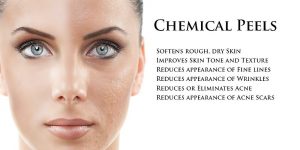 If performed correctly in appropriate patients, the appearance of the treated skin will have a more youthful texture with a uniform coloration that will blend with their untreated skin. To schedule a personalized skin whitening consultation with our doctors to discuss what choices are available to make your skin even-toned, glowing, flawless and whiter in the safest possible way then you have to visit or call at Dermesthetic where the dermatologists have such expertise and knowledge.
If performed correctly in appropriate patients, the appearance of the treated skin will have a more youthful texture with a uniform coloration that will blend with their untreated skin. To schedule a personalized skin whitening consultation with our doctors to discuss what choices are available to make your skin even-toned, glowing, flawless and whiter in the safest possible way then you have to visit or call at Dermesthetic where the dermatologists have such expertise and knowledge.
Ingredients
There are several types of compounds/ingredients of chemical peels, some of them are as follows:
Alpha Hydroxy Acid (AHA)
Alpha hydroxy acids (AHAs) are naturally occurring carboxylic acids such as glycolic acid, a natural constituent of sugar cane juice and lactic acid, found in sour milk and tomato juice. This is the mildest of the peel formulas and produces light peels for treatment of fine wrinkles, areas of dryness, uneven pigmentation and acne. Alpha hydroxy acids can also be mixed with facial washes, serums or creams in lesser concentrations as part of a daily skin-care regimen to improve the skin’s texture. AHA peels may cause stinging, skin redness, mild skin irritation, and dryness.
Beta Hydroxy Acid (BHA)
Salicylic acid is a beta hydroxy acid. It is antibacterial and anti-inflammatory and, as a result, works well for acne. Salicylic acid also has the ability to decrease the spots and bumps associated with acne. It is becoming common for beta hydroxy acid (BHA) peels to be used instead of the stronger alpha hydroxy acid (AHA) peels due to BHA’s being oil soluble. Studies show that BHA peels control sebum excretion, acne as well as remove dead skin cells to a certain extent better than AHAs. due to AHAs only working on the surface of the skin.
Jessner’s Peel
A German-American dermatologist. Dr. Jessner combined 14% salicylic acid, lactic acid, and resorcinol in an ethanol base. It is supposed to break intracellular bridges between keratinocytes. It is very difficult to “overpeel” the skin due to the mild percentages linked with the acid combination, and does not penetrate as deeply as other chemical peels.
Phenol Peel
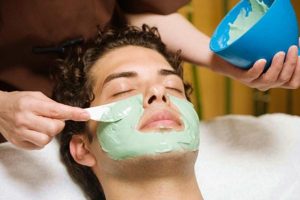 In a phenol peel the active ingredient is the croton oil, which used to be poorly understood or deliberately obfuscated. It is the basis for a deep chemical peel, which causes an intense caustic exfoliating reaction in the skin, and ultimately results in regeneration of the dermal architecture, effectively restoring younger dermis in a way that cannot be replicated by other, more superficial peels.
In a phenol peel the active ingredient is the croton oil, which used to be poorly understood or deliberately obfuscated. It is the basis for a deep chemical peel, which causes an intense caustic exfoliating reaction in the skin, and ultimately results in regeneration of the dermal architecture, effectively restoring younger dermis in a way that cannot be replicated by other, more superficial peels.
Retinoic Acid
Retinoic acid is belonged to retinoid. This type of facial peel is performed by a dermatologist in a medical facility or by a plastic surgeon, oral and maxillofacial surgeon. This is a deeper peel than the beta hydroxy acid peel and is used to remove scars as well as wrinkles and pigmentation problems. It is usually performed in conjunction with a Jessner; which is performed right before, in order to open up the skin, so the retinoic acid can penetrate on a deeper level. The client leaves with the chemical peel solution on their face. The peeling process takes place on the third day. More dramatic changes to the skin require multiple peels over time.
Technique
As a general rule, so called over-the-counter peels do not damage the skin and therefore cannot produce the same sort of results that a peel performed by a physician is likely to achieve. On the other hand, they are safe products and are unlikely to produce any skin damage. The so-called “microdermabrasion” is similarly non-invasive. A chemical peel comprises the application of toxic chemical solutions to the skin in a controlled manner, producing controlled tissue death. The desired depth of the wound is dependent upon the condition to be treated. After the peel, the skin regenerates. The damaged skin likely regenerates through the growth of cells from deeper layers of the epidermis or from undamaged hair follicles. We at Dermesthetic have highly qualified Dermatologists/Cosmetologists who are expert in skin Chemical Peeling treatments and procedures.
 Superficial peels rarely require anesthesia but are accompanied by a burning sensation when the solution is applied. This can be comforted by the application of cool compresses and fan-aided evaporation. Deeper peels often require extensive local anesthesia, systemic sedation, and rarely general anesthesia. The peeling process begins with the application of a defatting solvent (acetone or alcohol), which is wiped uniformly over the area to be treated. The peeling solution is then applied for the appropriate time period and then halted by the application of a neutralizing solution. Bandages are applied to the treated area, and the patient is sent home to convalesce.
Superficial peels rarely require anesthesia but are accompanied by a burning sensation when the solution is applied. This can be comforted by the application of cool compresses and fan-aided evaporation. Deeper peels often require extensive local anesthesia, systemic sedation, and rarely general anesthesia. The peeling process begins with the application of a defatting solvent (acetone or alcohol), which is wiped uniformly over the area to be treated. The peeling solution is then applied for the appropriate time period and then halted by the application of a neutralizing solution. Bandages are applied to the treated area, and the patient is sent home to convalesce.
Impact of Chemical Peel
- A chemical peel damages the skin in a controlled manner, producing a superficial wound.
- As the damage is repaired by the natural healing process, the skin’s appearance is improved.
- The depth at which the damage occurs is determined by the nature of the chemicals applied to the skin.
- The type of chemical peel used depends on the nature of the skin problem to be treated.
- Skin problems that respond best to chemical peels are due to chronic sun damage from ultraviolet light.
- Since most skin peels damage the skin, there is a period of recuperation necessary.
- As with any surgical procedure, there are risks, which include scarring, infection, and undesirable color changes.
- Currently, chemical peels are often used in conjunction with other destructive techniques like laser to diminish the signs of sun damage or acne scarring.
Treatment
We at Dermesthetic have experienced dermatologists and cosmetologists performing chemical peel and properly advise the patient regarding the treatment after making diagnosis of the type of skin. Chemical peels are broadly defined by the depth of damage in the skin that they produce. They are categorized as superficial, medium, and deep. These three basic types of chemical peels as under:
Superficial or lunchtime peel: Alpha-hydroxy acid or another mild acid is used to penetrate only the outer layer of skin to gently exfoliate it. The treatment is used to improve the appearance of mild skin discoloration and rough skin as well as to refresh the face, neck, chest or hands.
Medium peel: Glycolic or trichloroacetic acid is applied to penetrate the out and middle layers of skin to remove damaged skin cells. The treatment is used to improve age spots, fine lines and wrinkles, freckles and moderate skin discoloration. It also can be used to smooth rough skin and treat some precancerous skin growths, i.e. actinic keratosis
Deep peel: Tricholoracetic acid or phenol is applied to deeply penetrate the middle layer of skin to remove damaged skin cells. The treatment removes moderate lines, age spots, freckles and shallow scars. Patients will see a dramatic improvement in skin appearance. The procedure is used on the face and only can be performed once.
Post Treatment Care
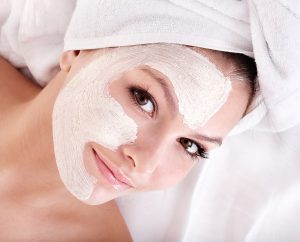 The skin is especially sensitive after a chemical peel. It is essential to practice strict sun avoidance during and after the healing process. The skin may remain sun sensitive for some time after the peel. The frequency of post-op physician visits will depend upon the depth of the peel and the preferences of the physician.
The skin is especially sensitive after a chemical peel. It is essential to practice strict sun avoidance during and after the healing process. The skin may remain sun sensitive for some time after the peel. The frequency of post-op physician visits will depend upon the depth of the peel and the preferences of the physician.
All peels require some follow-up care:
- Superficial peelsrequire one to seven days to heal. Treated skin will initially be red and may scale. Lotion or cream should be applied until the skin heals, followed by daily use of sunscreen. Makeup can usually be worn the next day.
- Medium peelsrequire seven to 14 days to heal. Treated skin will initially be red and swollen. Swelling worsens for the first 48 hours. Eyelids may swell shut. Blisters may form and break. Skin crusts and peels off in seven to 14 days. Skin must be soaked daily for a specified period, followed by ointment application. Antiviral medication is taken for 10 to 14 days. Mild lotion or cream may be applied. Avoid all sun exposure until healing is complete. Camouflage makeup may be worn after five to seven days. A follow-up appointment will be necessary to monitor progress.
- Deep peels require 14 to 21 days to heal. The treated area will be bandaged. Skin must be soaked four to six times daily, followed by ointment application for the first 14 days. Afterwards a thick moisturizer is applied for the next 14 days. Antiviral medication may be taken for 10 to 14 days. Mild lotion or cream may be applied. Avoid all sun exposure for three to six months. Camouflage makeup may be worn after 14 days. Several follow-up appointments will be necessary to monitor progress.
Side Effects
The deeper the peel, the more complications that can arise. The risks, side effects, and complications of chemical peels include scarring, infection, reactivation of herpes simplex infections, and a substantial contrast in coloration of the treated skin. Professional strength chemical peels are typically administered by certified dermatologists or licensed estheticians/cosmetologist. Professional peels and lower-concentration home peel kits can pose health risks, including injury and scarring of the skin. Possible complications include photosensitivity, prolonged erythema, pigmentary changes, milia, skin atrophy, and textural changes. Many individuals report professional chemical peels leave a minor yellowish tinge on their skin due to the retinol elements in the peel. This is expected to last 2-3 hours maximum. Varying Mild to moderate redness after the procedure is expected. All patients will have a recovery/recuperation period, the length of which depends upon the depth of the peel. Deep peels can result in considerable periods of healing on the order of weeks. Deep peels generally require extensive local anesthesia, conscious sedation, and occasionally general anesthesia, which carries its own risks. Therefore, it is recommended to use chemical peeling agents on the advice of qualified doctors. We at Dermesthetics where the dermatologists have such expertise and knowledge.







